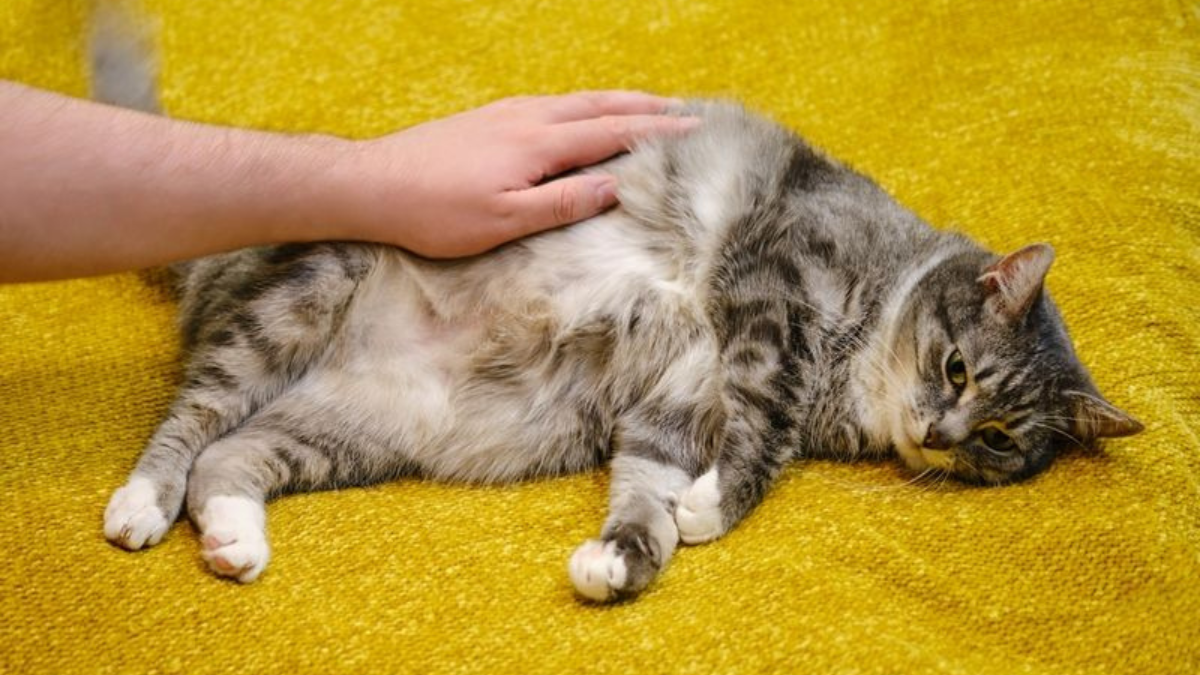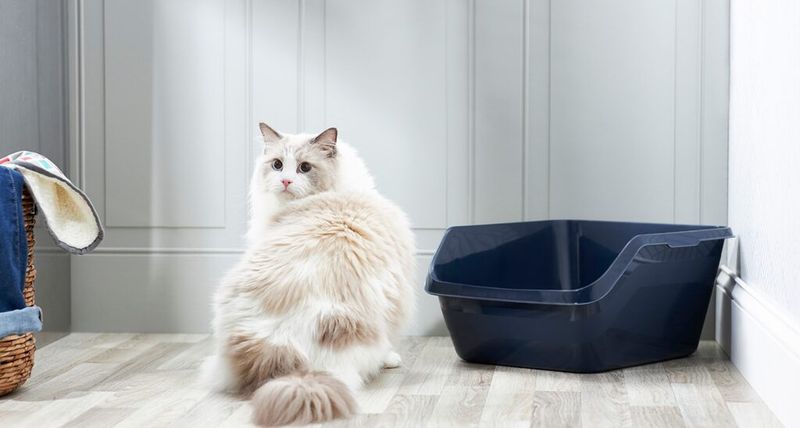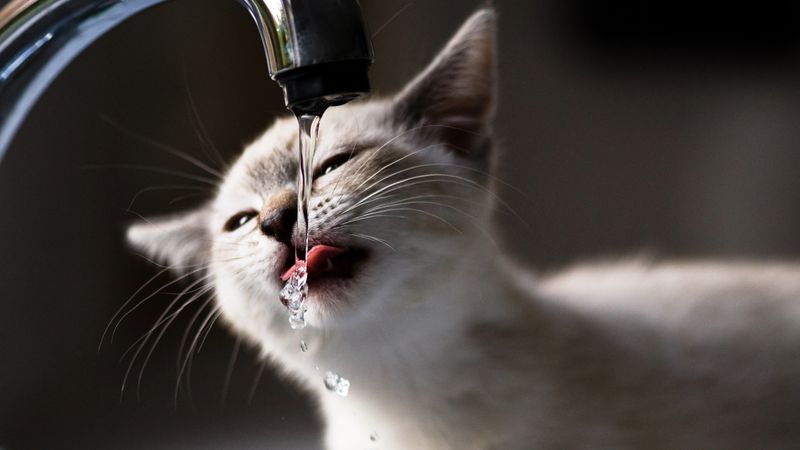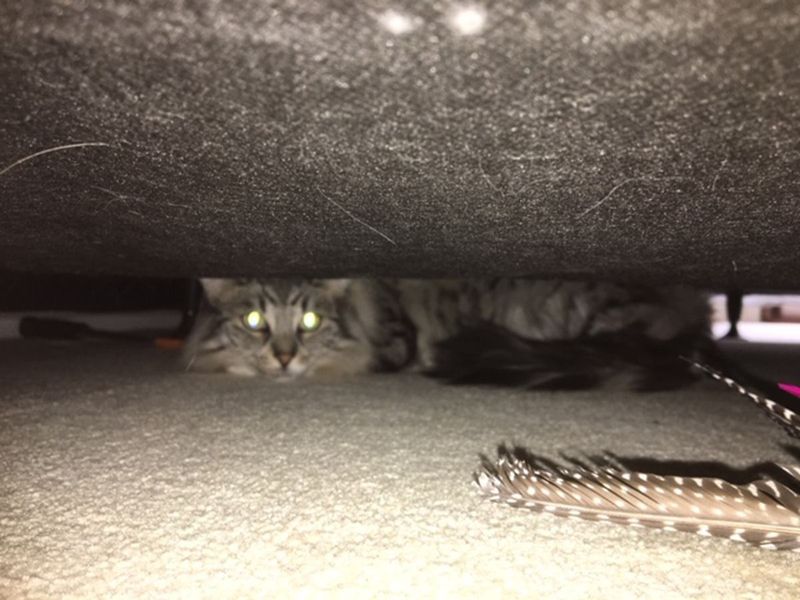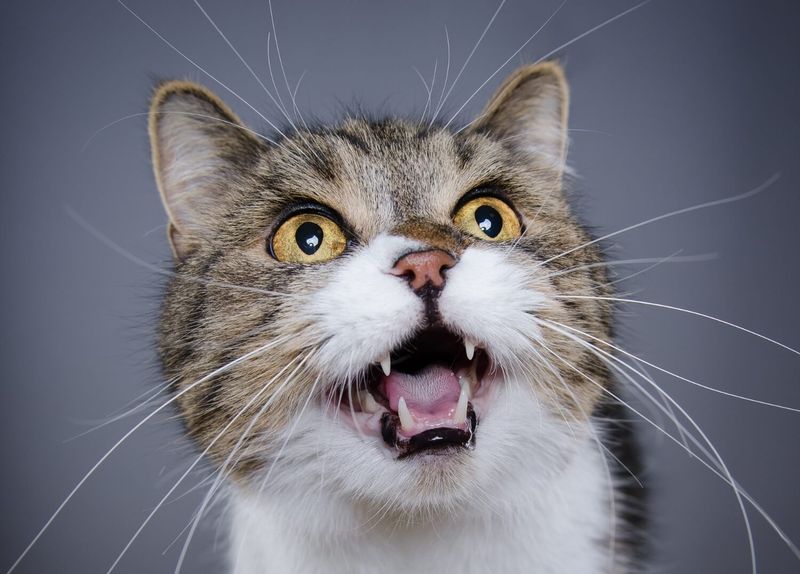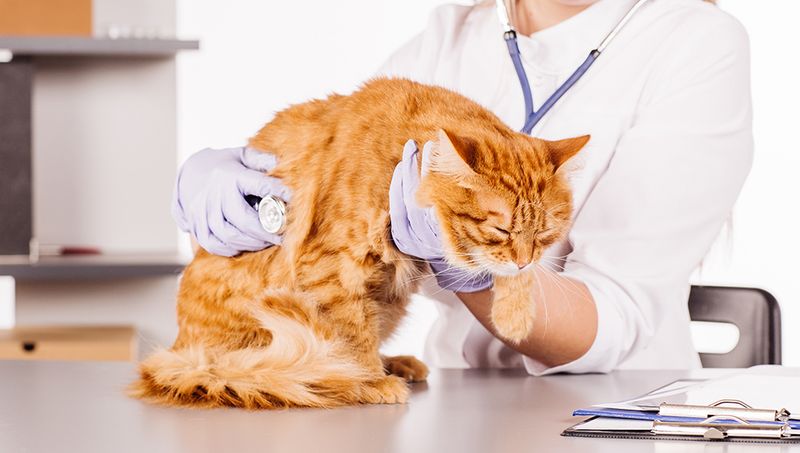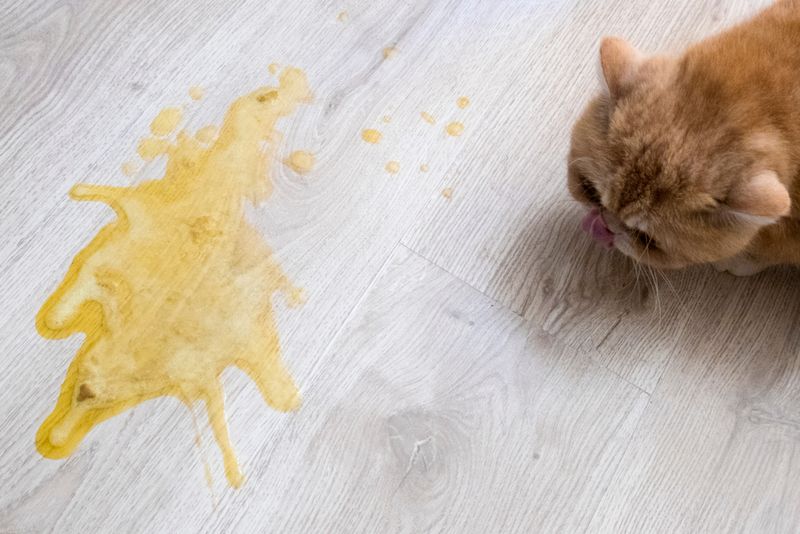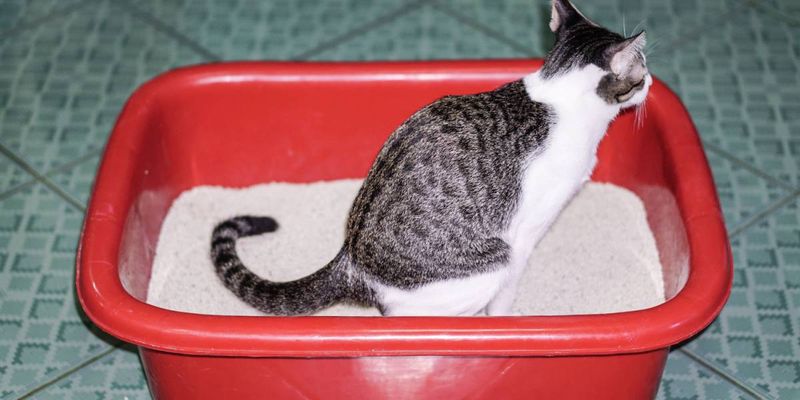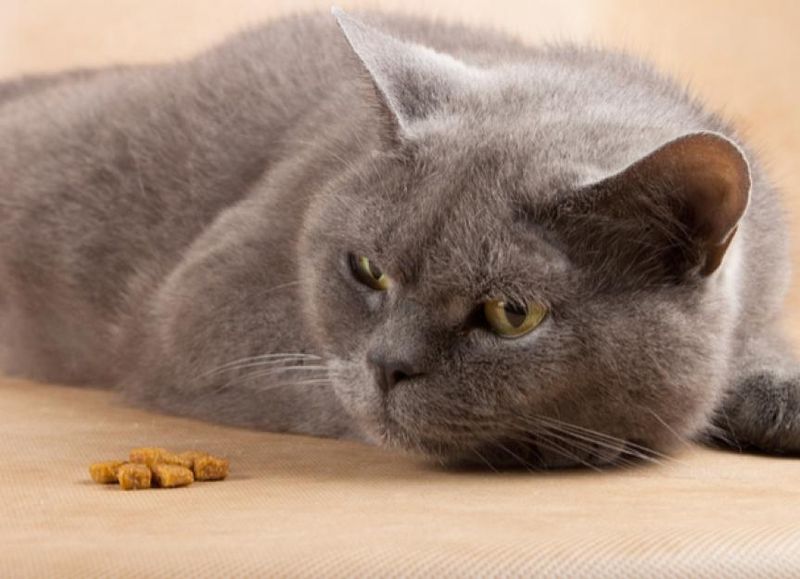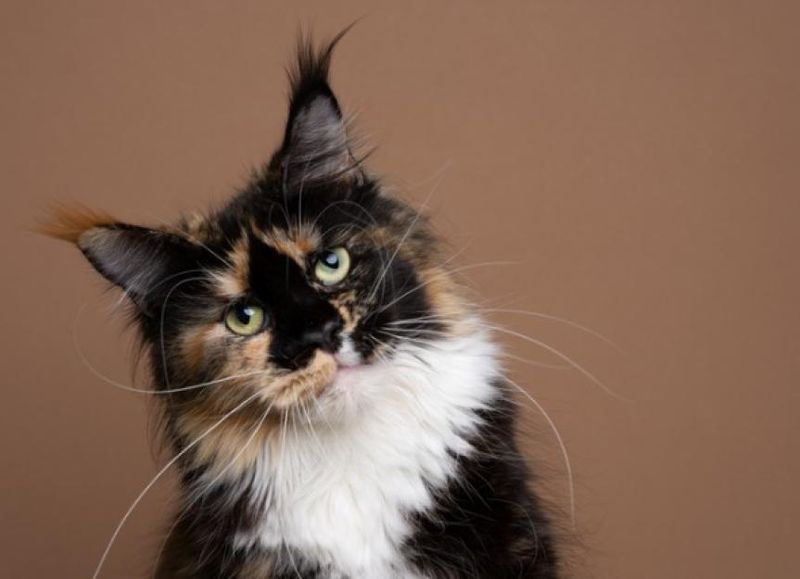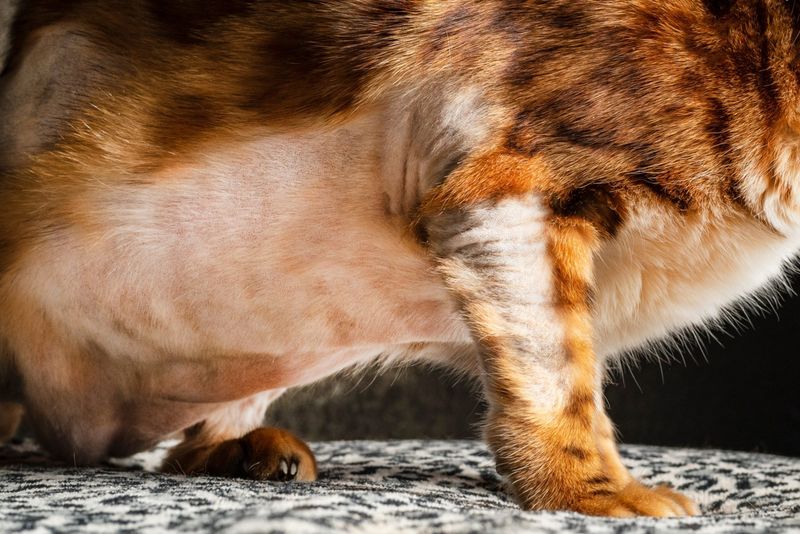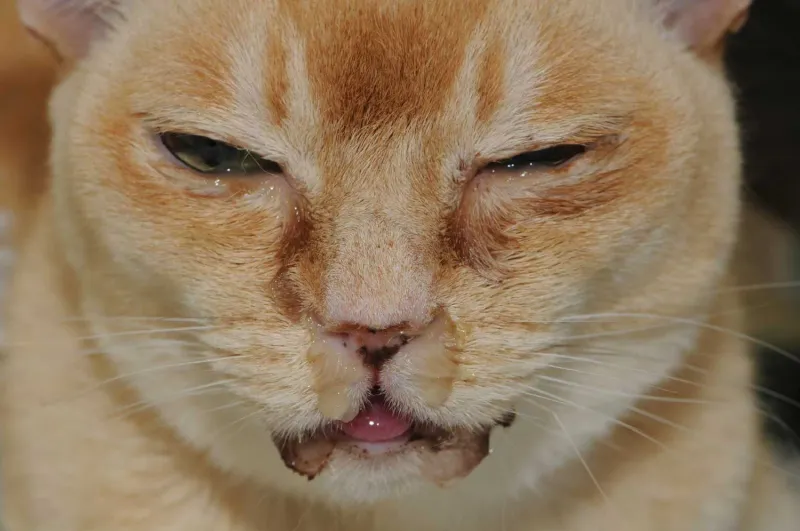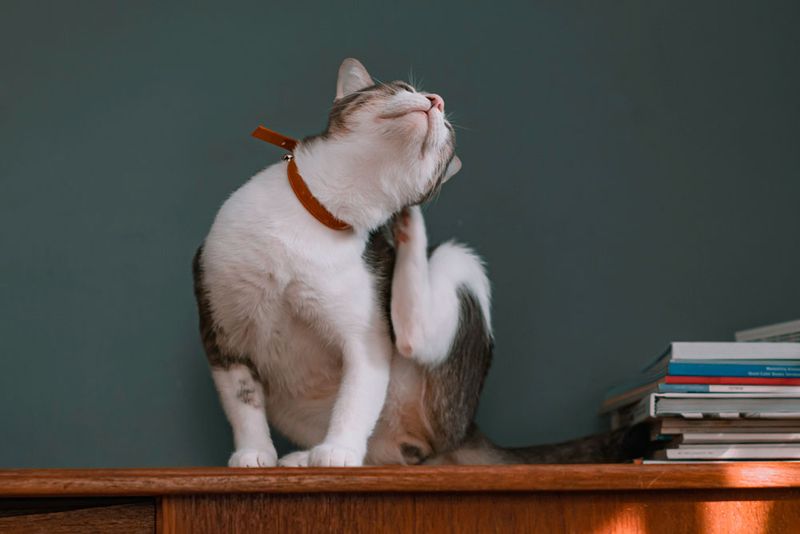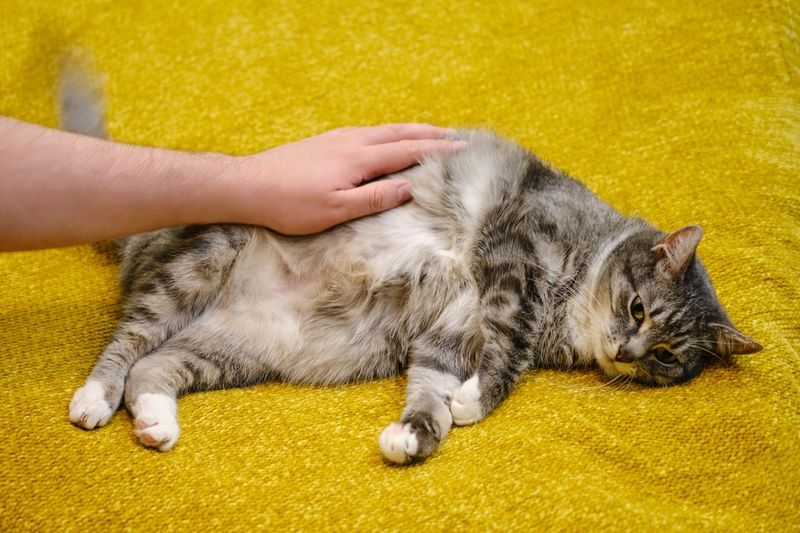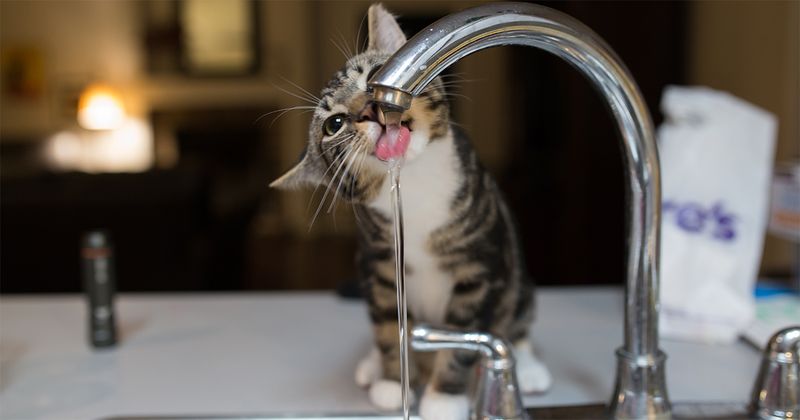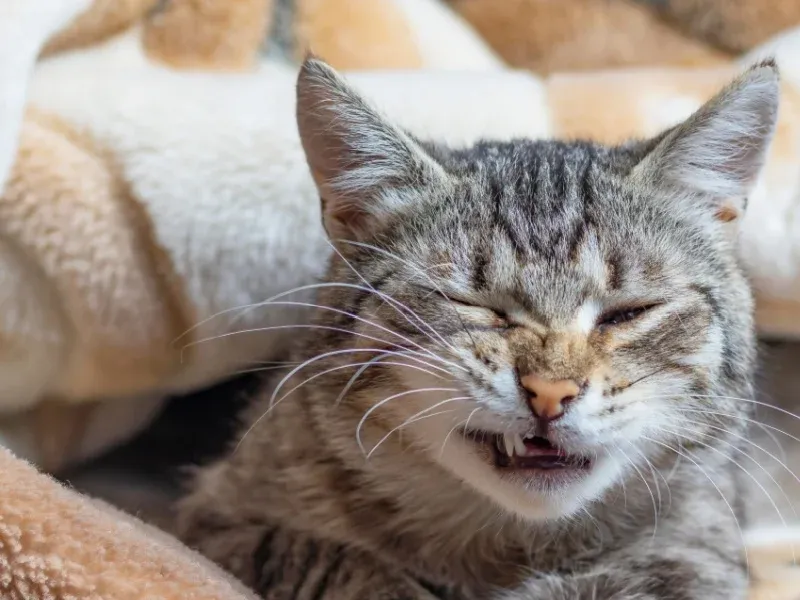📖 Table of Content:
- 1. Sudden Litter Box Avoidance
- 2. Excessive Thirst or Urination
- 3. Unexplained Weight Loss
- 4. Sudden Aggression or Hiding
- 5. Changes in Vocalization
- 6. Breathing Difficulties
- 7. Vomiting More Than Occasionally
- 8. Straining in the Litter Box
- 9. Drastic Appetite Changes
- 10. Unusual Head Tilting or Circling
- 11. Grooming Changes
- 12. Discharge from Eyes or Nose
- 13. Excessive Scratching or Head Shaking
- 14. Swollen Abdomen
- 15. Limping or Mobility Changes
- 16. Changes in Water Consumption
- 17. Bad Breath or Drooling
- 18. Seizures or Muscle Tremors
Cats are known for their mysterious and self-sufficient nature, which can make it difficult to detect when something is wrong. Subtle shifts in behavior often go unnoticed until a problem becomes more serious. Understanding what to watch for is essential in protecting a cat’s well-being.
Behavioral changes can be one of the first signs that a cat is experiencing discomfort, stress, or illness. Even minor deviations from their habits may point to deeper issues. Not all changes are urgent, but some warrant immediate attention.
Observing a cat’s daily routines can reveal important clues about their health. A sudden shift in mood, appetite, or activity level should not be dismissed. Early recognition of these signs can lead to quicker treatment and better outcomes.
1. Sudden Litter Box Avoidance
Your normally tidy cat suddenly refusing to use the litter box isn’t mere stubbornness. This behavior change often signals urinary tract infections, kidney problems, or bladder stones – all painful conditions requiring prompt attention. Male cats experiencing litter box issues need immediate care as they’re prone to urinary blockages, which become life-threatening within 24-48 hours. Female cats may develop painful cystitis or infections when avoiding their box. Environmental factors like dirty litter, recent household changes, or box location can also trigger avoidance. However, medical issues should always be ruled out first before assuming behavioral causes.
2. Excessive Thirst or Urination
Constantly empty water bowls and frequent trips to the litter box aren’t normal feline behavior. These changes might indicate diabetes, kidney disease, or hyperthyroidism – serious conditions requiring veterinary intervention. Healthy cats typically drink modest amounts of water, especially when fed wet food. When your cat starts emptying the water bowl multiple times daily or urinating in larger volumes, something’s wrong internally. Track water consumption by measuring how much you add daily. Normal cats consume about 20-40 milliliters per pound of body weight in 24 hours. Anything significantly higher warrants medical attention, as early detection of these conditions dramatically improves treatment outcomes.
3. Unexplained Weight Loss
Gradual slimming without dietary changes requires immediate veterinary attention. Cats naturally maintain stable weight, so unexplained loss often indicates serious health issues like hyperthyroidism, diabetes, cancer, or digestive disorders. Weight loss becomes particularly concerning when paired with normal or increased appetite. This paradoxical combination strongly suggests metabolic disorders where the body can’t properly use consumed nutrients. Senior cats experience this more frequently, but no age group is immune. Regular weighing helps detect subtle changes – even a pound represents significant loss in average-sized cats. Don’t wait until your cat appears visibly thin, as many conditions respond better to early intervention.
4. Sudden Aggression or Hiding
Your normally friendly cat hissing, swatting, or hiding consistently signals something’s wrong. Pain is often the culprit behind personality changes – cats instinctively mask discomfort, making aggression or withdrawal their only visible symptoms. Dental disease, arthritis, injuries, or internal problems can trigger these behaviors. A cat that growls when touched in specific areas is likely experiencing pain in that region. Similarly, a social cat suddenly preferring isolation may be seeking quiet to cope with discomfort. Cognitive dysfunction in senior cats can also cause personality shifts. While occasional mood changes happen, persistent behavioral shifts lasting more than a day warrant veterinary examination to identify and address underlying causes.
5. Changes in Vocalization
A normally quiet cat suddenly becoming vocal or a chatty cat falling silent requires attention. Increased meowing, particularly at night, can signal cognitive changes in older cats or pain from conditions like hyperthyroidism or high blood pressure. Low, guttural growling or howling often indicates acute pain or discomfort. Cats with developing hyperthyroidism frequently become more vocal as the condition affects their nervous system. Silent cats suddenly finding their voice may be responding to pain or distress they can’t otherwise communicate. The timing, pitch, and context of these vocalizations provide important clues about your cat’s health. Recording unusual sounds can help your veterinarian understand what’s happening.
6. Breathing Difficulties
Labored breathing in cats constitutes a true emergency requiring immediate veterinary care. Normal feline breathing is nearly imperceptible – you shouldn’t notice your cat’s breathing when they’re resting. Open-mouth breathing, excessive chest/abdominal movement, or extended neck posture while breathing indicates respiratory distress. Cats may also breathe rapidly or shallowly when struggling. Blue-tinged gums signal dangerous oxygen deprivation. Heart disease, asthma, pneumonia, chest injuries, or objects stuck in the throat can cause breathing problems. Unlike dogs, cats rarely pant unless severely stressed or overheated. Don’t wait to see if breathing difficulties resolve – this delay can prove fatal. Seek emergency care immediately.
7. Vomiting More Than Occasionally
While occasional hairballs are normal, frequent vomiting isn’t part of healthy cat behavior. Vomiting more than once weekly, or suddenly vomiting when it’s not typical for your cat, signals potential digestive issues, kidney disease, or other internal problems. The appearance matters too. Yellow, foamy vomit suggests bile and an empty stomach. Blood-tinged or coffee-ground appearance indicates bleeding in the digestive tract. White, foamy vomit multiple times suggests possible kidney failure. Persistent vomiting leads to dangerous dehydration and electrolyte imbalances. If vomiting continues beyond 24 hours, contains blood, or accompanies lethargy or other symptoms, seek immediate veterinary care rather than attempting home remedies.
8. Straining in the Litter Box
A cat repeatedly visiting the litter box but producing little or nothing indicates a potentially life-threatening emergency. For male cats especially, this behavior often signals urinary blockage, which can become fatal within 24 hours if untreated. Females may experience similar straining due to urinary tract infections, bladder inflammation, or constipation. The key is distinguishing between urinary and bowel straining – cats in urinary distress frequently lick their genital area and produce small, sometimes bloody urine spots. Constipated cats may cry while straining and produce small, hard stool or nothing at all. Both conditions require prompt veterinary attention. Never wait to see if straining resolves itself, as complete blockages rapidly become life-threatening emergencies.
9. Drastic Appetite Changes
A food-loving cat suddenly refusing meals or a normally picky eater devouring everything signals potential health issues. Appetite changes lasting more than 24 hours warrant veterinary attention, as they frequently indicate illness, pain, or metabolic disorders. Increased appetite may signal diabetes, hyperthyroidism, or intestinal parasites – conditions where the body cannot properly absorb nutrients despite increased consumption. Conversely, decreased appetite commonly accompanies pain, fever, kidney disease, or dental problems. Cats lacking food for even 2-3 days risk developing hepatic lipidosis (fatty liver disease), a serious condition requiring intensive treatment. Don’t assume appetite will return naturally – prompt diagnosis of underlying causes improves treatment outcomes and prevents complications from prolonged nutritional deficits.
10. Unusual Head Tilting or Circling
Head tilting, walking in circles, or balance problems indicate serious neurological issues requiring immediate attention. These behaviors suggest inner ear infections, vestibular disease, brain inflammation, or even tumors affecting your cat’s balance centers. Cats with these symptoms often appear disoriented, may fall over, and struggle to coordinate movements. Rapid, abnormal eye movements frequently accompany balance disorders. Senior cats are particularly susceptible to vestibular disease, which causes a sudden onset of severe balance problems. While some cases resolve with proper treatment, these symptoms should never be ignored or monitored at home. Prompt neurological assessment helps distinguish between treatable conditions and more serious problems, giving your cat the best chance for recovery from these frightening and disorienting symptoms.
11. Grooming Changes
Dramatic shifts in grooming habits signal underlying problems. Overgrooming creates bald patches or irritated skin and often indicates allergies, skin infections, parasites, or anxiety. Cats may focus excessive attention on painful areas like arthritic joints or urinary tract infection sites. Conversely, neglected grooming resulting in matted, oily fur suggests your cat feels too ill or painful to maintain normal hygiene. This particularly concerns senior cats with arthritis who find grooming physically difficult. Psychological factors like stress or anxiety can trigger both over-grooming and grooming avoidance. Monitoring changes helps identify patterns – is the behavior worse after certain events or in specific locations? Addressing both physical and psychological causes ensures comprehensive treatment for these concerning grooming changes.
12. Discharge from Eyes or Nose
Watery, crusty, or colored discharge from eyes or nose indicates respiratory infections, allergies, or eye disorders requiring treatment. Clear, watery discharge might signal early infection or allergies, while yellow-green discharge typically indicates bacterial infection needing antibiotics. Upper respiratory infections cause symptoms resembling human colds – sneezing, congestion, and eye discharge. These spread rapidly between cats and can become serious in kittens, seniors, or immunocompromised cats. Eye discharge without respiratory symptoms might indicate corneal injuries, glaucoma, or other eye-specific problems. Never attempt home treatment with human eye drops or medications. Proper diagnosis ensures appropriate treatment and prevents complications like corneal scarring or chronic infections that could permanently damage your cat’s vision.
13. Excessive Scratching or Head Shaking
Persistent scratching, head shaking, or ear pawing indicates uncomfortable skin or ear conditions requiring treatment. Ear mites, infections, allergies, or foreign objects cause intense irritation that won’t resolve without intervention. Examine your cat’s ears for brown discharge (ear mites), redness, swelling, or unusual odors suggesting infection. Skin conditions often create visible changes – redness, scabs, hair loss, or dandruff-like flakes that indicate allergies, parasites, or infections. Allowing these conditions to continue causes increasing discomfort and potential complications. Chronic ear infections may damage the ear canal or eardrum. Untreated skin conditions often worsen through the scratch-itch cycle as your cat damages their skin further. Early treatment provides faster relief and prevents secondary complications.
14. Swollen Abdomen
A visibly distended belly requires prompt veterinary examination, as it may indicate serious conditions like fluid accumulation, organ enlargement, or masses. This symptom is never normal, even in kittens who naturally have rounded bellies. Causes range from parasites (especially in kittens) to more serious conditions like heart disease causing fluid buildup, FIP (Feline Infectious Peritonitis), or tumors. Rapid abdominal swelling constitutes an emergency, potentially indicating internal bleeding or severe infection. Don’t mistake abdominal swelling for weight gain – true distension feels tense or fluid-filled rather than soft. Accompanying symptoms like breathing difficulties, lethargy, or decreased appetite increase urgency. Early diagnosis significantly improves outcomes for many conditions causing abdominal distension.
15. Limping or Mobility Changes
Sudden limping, reluctance to jump, or difficulty navigating stairs indicates pain requiring attention. Cats instinctively hide discomfort, so visible mobility changes suggest significant issues like injuries, arthritis, or neurological problems. Acute limping without an obvious cause might indicate fractures, dislocations, or soft tissue injuries. Gradual onset typically suggests arthritis, particularly in senior cats. Watch for subtle signs – hesitation before jumping, stiffness after resting, or reduced grooming of hard-to-reach areas. Never give human pain medications to cats – they’re highly toxic and potentially fatal. Instead, seek proper veterinary pain management. Many mobility issues respond well to early intervention with appropriate medications, weight management, and environmental modifications that can significantly improve your cat’s comfort and quality of life.
16. Changes in Water Consumption
Monitoring your cat’s drinking habits helps detect early disease signs. Suddenly empty water bowls indicate increased thirst – a key symptom of diabetes, kidney disease, hyperthyroidism, and other serious conditions requiring prompt attention. Conversely, decreased water intake can lead to dangerous dehydration, particularly in cats with reduced appetite. Healthy cats typically drink 20-40 milliliters per pound daily, with variations based on diet type (wet vs. dry food). Track consumption by noting how often you refill bowls. Multiple daily refills for one cat suggest a problem. Measuring exact amounts provides even better data for your veterinarian. Water intake changes, especially when accompanied by other symptoms like increased urination or weight loss, should never be ignored.
17. Bad Breath or Drooling
Foul breath exceeding typical “cat breath” indicates dental disease, oral injuries, or systemic problems requiring treatment. Healthy cats shouldn’t have severely offensive breath – persistent bad odors suggest bacterial overgrowth from dental disease or more serious issues. Accompanying symptoms like drooling, pawing at the mouth, dropping food, or one-sided chewing point to painful conditions. Yellow-brown tartar buildup, red gums, or visible broken teeth confirm dental problems that cause significant pain and can lead to systemic infections. Sweet or fruity breath may indicate diabetes, while ammonia-like odors suggest kidney disease. Never ignore these changes or assume they’re normal aging signs. Modern veterinary dentistry offers many solutions for oral health issues, dramatically improving comfort and preventing progression to more serious systemic problems.
18. Seizures or Muscle Tremors
Any seizure activity – from full convulsions to subtle facial twitching or unusual repetitive movements – constitutes a medical emergency. These episodes indicate abnormal brain activity from various causes, including epilepsy, toxin exposure, brain tumors, or metabolic disorders. During a seizure, cats may lose consciousness, paddle their legs, salivate excessively, or urinate/defecate involuntarily. Milder episodes might appear as momentary disorientation, muscle twitching, or vacant staring. Even brief episodes require immediate veterinary evaluation. Track seizure duration, frequency, and accompanying symptoms. Video recording episodes helps your veterinarian assess severity. Never attempt to restrain a seizing cat or put anything in their mouth. Instead, ensure they’re in a safe area away from furniture or stairs until the episode passes, then seek emergency care.
